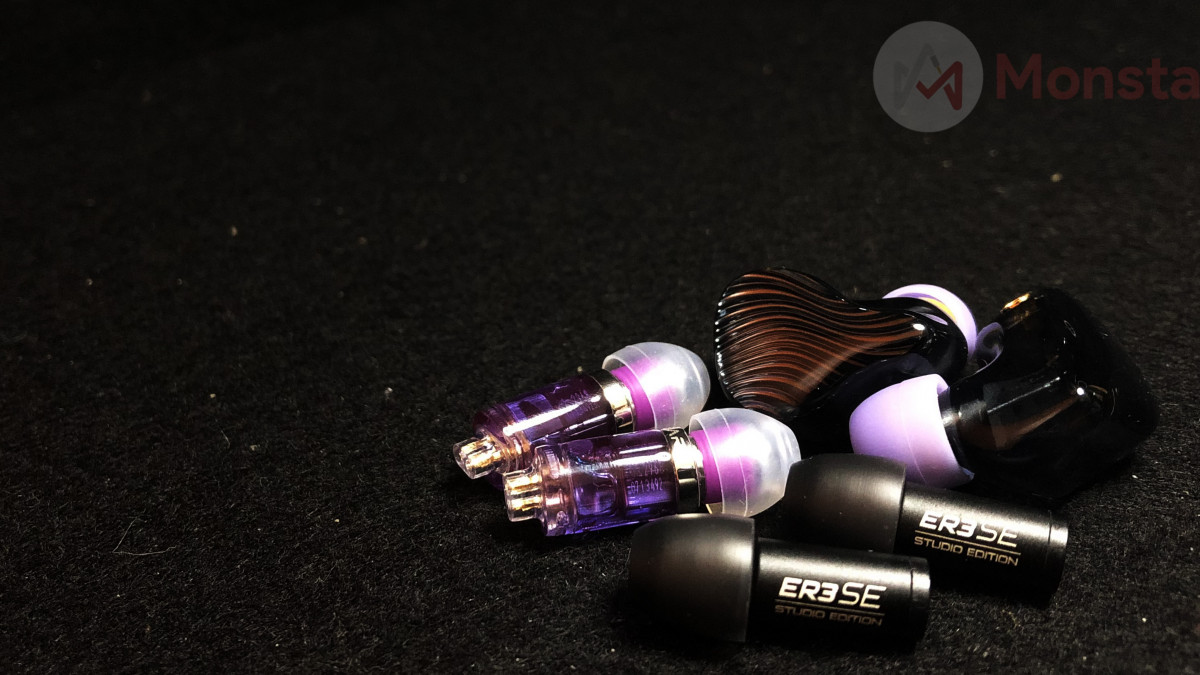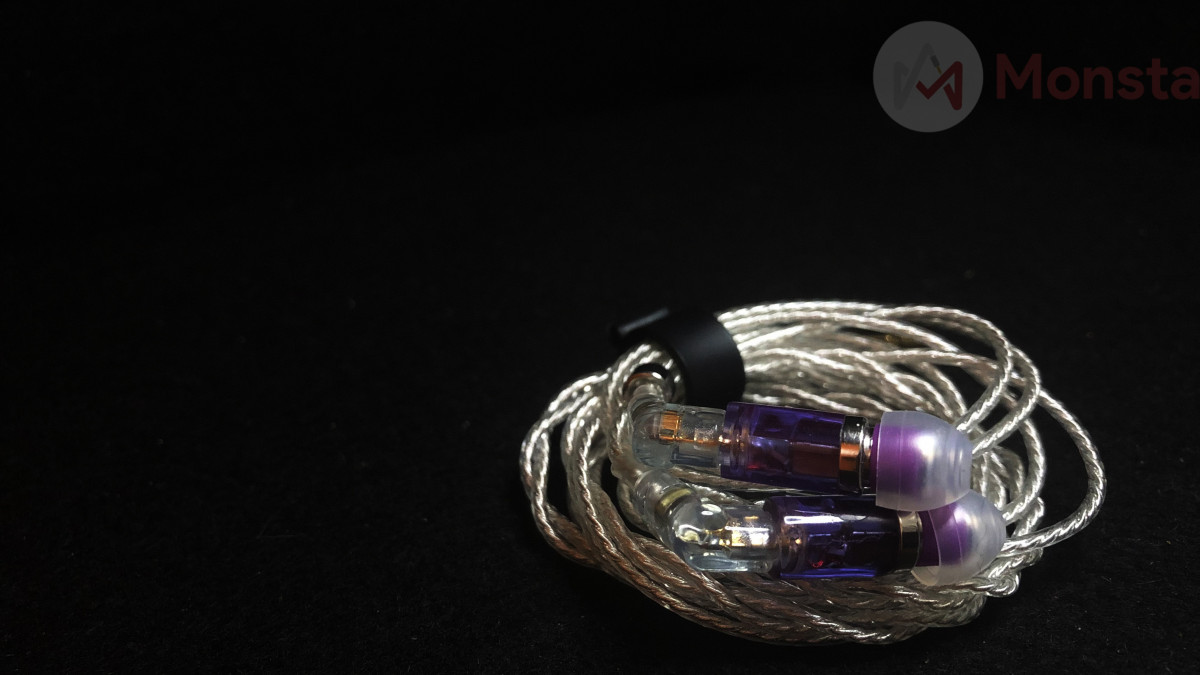Intro
In the chase towards the ‘flattest-sounding’ IEM, there has been a lot of manufacturers and brand names that showed off their tuning expertise to be offered to the mass market. Most of them have a different approach to deliver somewhat close to the Diffuse Field Neutral sound signature. Yes, it is not a Harman’s target and it is less appealing for the general consumer but rather a niche tuning catered to a very specific crowd. But a target curve is just a target curve. The whole listening experience is also weighted by other factors.
KB Ear really did their homework with the Neon and it was a really interesting feat having them compared side by side to some more pricier, similarly tuned and similarly configured IEMs. It will definitely appeal to a specific group of audiophile but will also provide a new listening experience for the more adventurous ones. This review unit was provided by KB Ear.
Packaging
Packaging is fairly simple. The black sleeve with the neon-colored wording really pops out and actually gives me some sort of a neon-light-district vibes. The IEM itself is packed neatly inside, nestled securely in foams. Supplied along with the Neon are 3 sets of silicon eartips, a set of foam eartips and a nicely made carry case. It’s a fairly simple packaging here but the presentation is different from what I was accustomed to.
The shell is made of resin with an aluminium nozzle and while the color choices might be questionable, it really does reflect its name. The overall design itself suggests that it should perform at its best with a deep fit. And I mean a very deep fit somewhere similar to that of the Etymōtic’s deep. The cable supplied with the Neon is one of the best stock cable that I have experienced so far. The behaviour and feel of the cable just speaks for itself = quality. It is also worth noting that the connector is uniquely marked with a bulge which makes it easier to differentiate the left and right IEM (the bulge should be pointed forward when in use).
The only caveat I had with the Neon is the cable connection. It is secure enough until you are used to using them deep inside your ears. Once, the entire Neon was left inside my left ear while trying to pull them out. Yes the whole IEM, not just the eartips. LOL! Most probably it was me not being extra careful but the connections really should been more secure considering the design approach.

Functions & Specifications
- Material: Resin Shell with Aluminium Nozzle
- Transducer Type: 1x Balanced Armature (Knowles ED29689
- Sensitivity: 105dB/Vrms @ 1kHz
- Impedance: 14ohms @ 1kHz
- Frequency Range: 20Hz – 20kHz
What’s In The Box
- KBEar Neon
- Silicon Eartips (S, M, L) x1
- Foam Eartip (M) x1
- Carry Case
Retail Price & Where To Get
You can get this KBEAR Neon for US $49.99.
Purchase Link :
KBEAR Official Store | https://invol.co/cl4ua5v
Sound & Tonality
Despite the fun sounding name and interesting shell colour choices, the Neon carries a neutral sound signature (which is an uncoloured sound). Accompanied with an arguably BA-natural tonality, they’re leaning close to the Diffuse Field Neutral but somehow manages to maintain the balance between being too analytical and too fun, which is a very wise decision.
Source Used
Xduoo X2S > Xduoo XQ-10 > KBEar Neon
Foobar2k > IFI micro iDSD Black Label > KBEar Neon
Songs Used
Bass
The Neon does extend into the sub-bass region but they are by no means rumbly or elevated. It’s just there. Mid-bass is neutral but is also somewhat ‘thumpy’. Yes, ‘thumpy’ in a way that it tries to provide some sense of energy on the lower end to avoid from sounding too anaemic (they’ll still sound anaemic if you’re used to more fun signature, YMMV). Upper-bass however is clean but somewhat blunted in speed. The bass on the Neon is not the most detailed despite sounding clean and textured but it is at least typical of a Diffuse Field Neutral tuned IEM.
Mids
The transition from the upper-bass to the lower-mids is good and as expected from a single BA driver, there’s no audible bass bleed here, obviously. The mids is forward but somehow they sound veiled. Don’t get me wrong, the detail retrieval is OK but there’s some kind of muffle which retracts the full potential of the Knowles ED29689. But on the plus side, that slight veil avoids the mids from sounding hollow. Upper-mids is tastefully done to be engaging enough without being thin and far from being shouty.
Treble
Lower-treble is clear and almost…almost crunchy sounding. It somehow lacks the energy to proper complement the upper-mids. Treble is fairly detailed, controlled and peakiness is a non-existent which renders the Neon suitable for longer listening sessions. The brilliance on the upper-treble is good but they’re rolled off quite a bit early, resulting in a less airy presentation. Nonetheless, the treble is inoffensive and will suit most people who prefer the characteristics of a neutral, somewhat accurate ‘reference-tuned’ IEM.
Soundstage
The Neon do sound a bit closed in. They are slightly wider than deep but lacking in height. If the stage is slightly taller, it would render the Neon to be almost holographic sounding (with constraint from the stage depth). Still, a good soundstage presentation nonetheless considering the asking price and the limits of a single BA driver that’s being used.
Imaging & Separation
On to some more technicalities, the Neon paints the spatial cues in a well defined and precise image despite the small-ish soundstage. Separation however is not rendered as beautifully as the imaging itself. It can get rather congested, which also affects the layering to be somewhat more 2-dimensional. While these two should come hand in hand, it may be due to the veil that took its toll on the separation as opposed to the size of the soundstage.
Driveability
The Neon is relatively easy to drive and its behaviour is pretty much similar to one of the more highly regarded IEM…more on that in the comparison section. Truth be told, they don’t quite scale very well with more power being fed. There are slight improvement but rather insignificant.
Synergy
Similar to most neutral-sounding IEMs, they’re source sensitive and are very fond of warm sources. Reason being is that warm sources will balance out all the uncoloured part of the sound spectrum to be more pleasing, immersive and fun to listen to.
Comparison
*disclaimer: comparison is made based within the niche area of “neutrally-tuned” IEM, and not based on the general consensus.
FiiO FA1
The FA1 is FiiO’s take on the single-BA IEM market which utilizes a Knowles ED33357 accompanied with a more ergonomically designed shell. The sound signature is balanced-neutral and can at least be an all rounder if need be (YMMV). Bass sounds more natural and smoother on the FA1 but detail retrieval is excellent in comparison to the Neon. Mids have more body (read:lush) and clearer on the FA1 which renders better detail retrieval than the Neon. Treble is more exciting (still a safe treble) and airier on the FA1 despite being the more ‘balanced’ sounding IEM.
On to some technicalities, soundstage on the FA1 is rounder and taller. But then again it’s not a night and day difference since it’s still a single-BA, derived from the same base model. Layering is perceptibly similar on both despite the FA1 being slightly deeper. Imaging and separation is noticeably better, well distinguished and more accurate on the FA1 as compared to the Neon. In short, the FA1 is more comfortable, slightly balanced sounding with a slightly better technical performer than the Neon.
Etymōtic ER3SE (stock filter)
The ER3SE is similarly designed to be a minimalistic, deep fitting IEM and built with an aluminium shell as opposed to resin shell on the Neon. Well, these are the guys who pioneered this particular niche IEM-scape after all. Bass is similarly neutral but more detailed and wonderfully textured on the ER3SE. Mids are more transparent and detailed on the ER3SE but almost sounding hollow as compared to the Neon. Treble is safely tuned to give enough energy and sparkle but are similarly rolled off for both the ER3SE and the Neon.
This Etymōtic is my current benchmark for technical performance under the $200 mark. To be fair, the Neon is not that far off in some region. Soundstage is similarly closed in for both IEMs but the ER3SE has a more evenly distributed width, depth and height which renders them to be more holographic sounding. Imaging and separation on the Neon is clearly outpaced by the ER3SE. Not to mention the layering on the ER3SE is more defined and polished. All in all the Neon is a good, cheaper alternative for one to experience something almost similar to the Etymōtic.

For Who
In my humble opinion, those who prefer Diffuse Field Neutral signature will most likely grow fond of the Neon. Standing between the lines of being anaemic, sterile and monitor-ish sounding IEM, the Neon is indeed one of the less ‘fun’ IEM which targets a specific group of people. I mean, yes it’s a niche tuning but IEMs that bear this particular sound signature are very versatile to begin with. The Neon do benefit from deep insertion similar to the Etymōtics so potential buyers be wary.
Stars & Verdict
Unlike a single-DD IEM, a single-BA IEM is arguably the more unfavourable configuration for most people due to the known limitation of the driver. But in the real world application, as long as the IEM caters to your sound preference and use case scenario, it should be more than adequate to provide a satisfying listening experience (given that you like the signature). Despite its quirks, it’s not too much to say that the Neon is quite a competitive IEM (considering its price) within the niche single-BA, neutral-sounding IEMs realm.
[usr 4]

